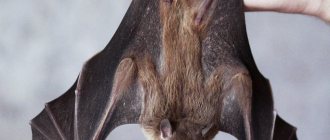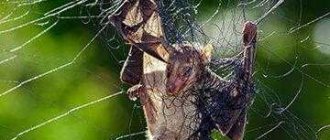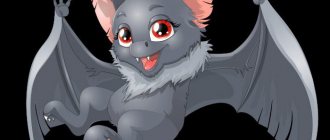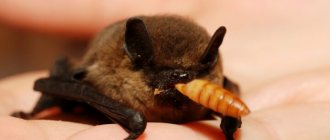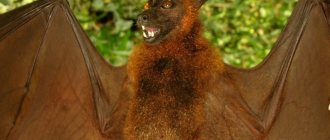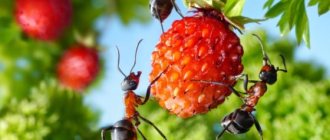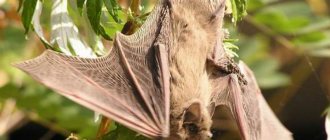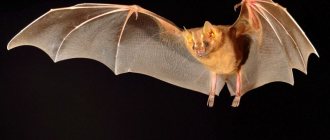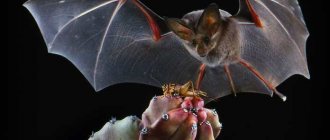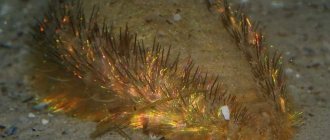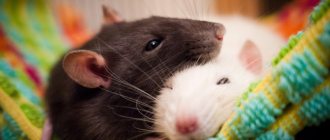Mice, throughout the entire period of their existence, do nothing but ruin a person’s life. Rodents eat almost anything that gets in their way. They don’t mind eating vegetables, fruits, as well as some things that are in the house. As a result, a person has spoiled food and everyday items. Therefore, over the years, people have come up with many effective ways to get rid of such an unpleasant neighborhood.
Before you start fighting rodents, it would be a good idea to study the ways they can enter the house, otherwise the fight will not have a positive result. In addition, you need to determine what attracts mice to this living space. If you approach this problem with all seriousness and responsibility, then you can get rid of mice once and for all. The main thing is to start the fight against rodents in a timely manner, before they multiply.
Rodent Information
As a rule, house mice, which are synanthropic creatures, settle in a person’s home. They differ in that they live exclusively next to a person in his home. They constantly follow a person and can be seen on ships and even on airplanes. Therefore, house mice quickly master new human homes, entering them through ventilation systems, through cracks in the floor or walls.
When a mouse appears in a house, it is not immediately noticed, since mice prefer to be nocturnal, and during the day they rest in secluded places. When they begin to actively move around the house at night, you can hear rustling and squeaking noises, and that’s when the owners begin to notice the presence of rodents in the house. Field mice breed exclusively seasonally, while mice that live in a house breed year-round. After 2 months of life, they can already reproduce. At the same time, they are able to reproduce offspring literally every month. It’s not difficult to imagine what the mouse population will be like in six months: their numbers are increasing exponentially.
The female herself arranges the nest, dragging various pieces of paper, wool, shavings, etc. to a certain place. During this period, she becomes aggressive and can even bite a person. Since mice are not large in size, they can penetrate through fairly small cracks. If mice are in danger, they are capable of attacking animals that are much larger than them.
In human homes, mice settle mainly in storage areas. With the arrival of summer, they leave human habitation and move to fields, where they build nests at a depth of about 40 cm. With the arrival of autumn, they again begin to attack private houses.
Vole mouse: description
Field mice are divided into several species, depending on their habitat. Therefore there are:
- The common vole is the most common species.
- The red vole, which prefers to live in the hot steppes of Asia.
- The forest vole, which is found in the forest-steppe zones of Eurasia, as well as North America.
- Subterranean vole. As a rule, this species lives in urban communications, as well as local areas.
All of them represent the genus of voles, the family of hamsters, the order of rodents and the class of mammals.
What does it look like
All varieties of voles have an elongated, sharp muzzle, dark, beady eyes of black or brown hue, ears pointed at the ends and a long tail up to ¾ of the length of the body. This small rodent has a length of about 10 cm, sometimes up to 13 cm, excluding the length of the tail, and weighs about 15 grams. The cheekbones are high, with wing-shaped plates, so it looks like they have dimples in their cheeks. The paws are also small, with the size of the foot no more than 2 centimeters. The claws are quite short and not sharp, since the animal is constantly rummaging somewhere.
The fur on the back has a brownish-ochre tint. The fur is not soft, but in some places it is even quite hard. In older individuals, the fur is so coarse that it can be compared to the spines of a hedgehog. It is quite easy to distinguish a vole from other species of rodents, since a dark stripe runs along its back. The abdomen is colored light gray.
Interesting to know! As a rule, young individuals are distinguished by a more intense coat color, but older individuals have a lighter coat color, and even gray hairs are found.
It is almost impossible to distinguish a male from a female. At the same time, it is possible to distinguish a field mouse from a house mouse if you pay attention to some differences.
| House mouse | Harvest mouse |
| Small, up to 10 cm | Slightly larger, up to 13 cm |
| The back is gray-black, dark | The back is brown with a stripe in the middle |
| The abdomen is almost white | Abdomen light gray |
| Short muzzle | Pointed muzzle |
| Ears are large and rounded | Ears are small and triangular |
| Tail up to 60% of body | Tail up to 70% of body |
It should be noted that field mice can easily settle in a person’s home or on a personal plot, while house mice can easily live in natural conditions.
Behavior and lifestyle
What field mice do is dig holes at shallow depths and move along them. Mini-moles do the same thing, so their lifestyle can be compared. When mice dig holes, they leave the ground away from them, so the mound has a slope on one side. The entrance to the hole is not from the top, like a mole, but from the side. In winter, mice move under the thick snow cover.
Important point! Voles do not hibernate in winter, so they constantly have to look for food for themselves. At the same time, they also feed on food reserves stored for the winter.
Voles live both in burrows and use suitable shelters for this, such as piles of branches, straw, and also in outbuildings for various purposes. A mouse hole is a collection of underground passages that can reach several tens of meters in length. Underground passages connect several storage rooms, a nest-bedroom, and several emergency exits. One of them leads to a water source.
During the day, mice stay in their shelters, and at night they go out hunting. At the same time, they gnaw everything that comes their way. If there are problems with food, then mice can make long migrations.
Mice move relatively quickly. They know how to swim, but try to avoid it. They can live in numerous colonies, consisting of several females and their offspring, which are quite numerous.
How long does a vole live?
Vole mice living in the natural environment live no more than 2 years on average due to the fact that they have many natural enemies. If a mouse is provided with comfortable living conditions, it will easily be 10 years old.
MICE - INTERESTING FACTS
Natural habitats
Field mice are found in almost all corners of our Planet, with the exception of the hottest areas. Therefore, voles live:
- In the territory of modern Europe, including Denmark and Finland.
- Within the Urals and Siberia.
- In North America, in forest-steppe zones.
- The vole mouse lives in China, Mongolia and Taiwan.
- In southern latitudes, this habitat is limited to Libya and the northern regions of India.
Despite the fact that these rodents are called voles, they often settle where there is enough grass. These are meadows, forest edges, forest clearings, and also not far from human habitation. On occasion, they can easily get into a home, settling in the attic of the house, in the ventilation system, in the insulation layer, etc.
Interesting moment! Within damp, swampy areas, rodents do not dig holes, but make their nests in thickets of bushes, placing a grass ball nest on the highest branch.
Many mice die during floods, prolonged downpours, and winter thaws, when rodent burrows are flooded with water.
What does it eat?
Voles are herbivorous rodents. The teeth of these rodents grow throughout their lives, so the animal must control their growth by gnawing on everything. During the day, a mouse eats as much food as it weighs.
The diet of mice includes:
- Various herbs and their seeds.
- Berries.
- Nuts, as well as cone seeds.
- Corn.
- Tubers, plant roots, root vegetables, bulbs.
- Buds and inflorescences of various shrubs.
- Tender bark of young trees.
Reproduction and offspring
The process of reproduction in vole mice begins with the arrival of spring warmth and continues until late autumn. The mouse bears its offspring for 3 weeks. In one season, a female can become pregnant up to 8 times, although this usually happens about 4 times. Each time, an average of 6 cubs are born.
Mice are born completely helpless and blind. After this they begin to develop rapidly:
- In less than 2 weeks they begin to see.
- After another week they are able to survive on their own.
- After 3 months, or even earlier, they can reproduce themselves.
Interesting to know! Experts know that female vole mice can become pregnant on the 13th day of their life and viable offspring can be born on the 33rd day of life.
Natural enemies
Only thanks to their high fertility do mice manage to maintain their populations, since they simply have a huge number of natural enemies. These include birds of prey, animals of prey, and domestic animals. One owl destroys up to 1 thousand rodents in one year. For some animals, mice are an exceptional food, thanks to which they manage to survive in winter conditions.
Damage to people and homes
The damage that rodents cause in a person’s home is so significant that it is difficult to even imagine. These animals can chew wires, which can cause a fire, and damage soft toys and upholstered furniture, as well as other items. In addition, mice are carriers of dangerous diseases such as salmonella, plague, typhus, and Weil's disease. Infection can occur through food on which a mouse has run and left traces of its activity. Rodents are distinguished by the fact that they leave their excrement everywhere, infected with various viruses and bacteria. Even waste vapors pose a danger. Children and the elderly who have weakened immune systems may be the first to suffer.
Despite their small size, the damage these pests cause is quite significant. Even in ancient Rome, mice were caught with various mousetraps. Pests are also distinguished by the fact that they quickly adapt to new conditions. They survive in conditions of extreme cold, hunger and even high humidity. They build warm nests for themselves and store food for future use, and having sharp eyesight helps them avoid danger in time. In search of food they move over considerable distances.
Nutritional Features
The lifestyle of mice is directly related to their feeding habits. Rodents settle where they can quickly access food. The animals' bodies are designed in such a way that they do not tolerate hunger well. An adult needs to eat about 6 g of a variety of food per day. In case of absolute starvation, the mouse dies within 3 days.
Small rodents prefer plant foods:
- grain crops;
- cereals;
- flour;
- succulent parts of plants;
- roots;
- young shoots of trees;
- bark.
In unfavorable conditions, mice eat berries, fruits, and vegetables. They periodically replenish the body with proteins - they eat caterpillars, beetles, and worms. Don't mind eating birds' eggs.
On a note!
The mouse is not a predator, but when unfavorable living conditions are created, the animal eats its compatriots, cubs, chickens, and carrion.
Nutrition and reproduction of mice
In human territory, the diet of mice expands significantly. They eat all edible foods - ready-made, semi-finished, raw. In addition to cereals, flour, grains they gnaw:
- vegetables;
- bread;
- cheese;
- sausage;
- meat;
- cookie;
- canned food;
- fish.
An interesting fact about mice is that cheese is not a favorite treat for mice. They prefer plant foods more. The marks left by mice's teeth on wood, plastic, bricks, polystyrene foam, and plastic create the impression that mice are omnivorous. But mice chew hard, inedible materials for a different purpose.
Each jaw has a pair of incisors that grow daily throughout life. The animals are forced to constantly grind them down. To do this, they look for hard objects and gnaw them, leaving behind shavings, sawdust, and small pieces.
Signs of the presence of mice in the house
The fact that mice have appeared in the house can be determined by the following elements:
- Small holes appear in the area of the baseboards, which these pests could chew through.
- Mouse droppings can be found in various places, as well as in the area of holes.
- The room smells like mice. This smell cannot be confused with any other smell.
- Rustles and squeaks are heard not only at night, but also during the day.
- If a cat lives in the house, then it begins to behave aggressively and runs from one place to another.
How to get rid of Mice The most pleasant way!
Reproduction and lifespan
The reproduction process of bats is largely determined by their habitat and their belonging to a particular species. Most species give birth once a year, but animals living in warm climates can give birth twice or even three times a year. Usually the female gives birth to one baby, less often 2-3. There is no such thing as a family for bats. Immediately after mating, the male and female scatter in different directions and forget about each other.
The colony
Born babies develop quickly, feeding on mother's milk. Within a month they begin to leave the shelter and learn to hunt on their own.
How long bats live depends on the species, habitat conditions, and food availability. Indicators range from 5 to 20 years.
Effective methods of controlling mice
There are many ways to control mice in a private home. Each of them has both its pros and cons. It is important to choose it for specific conditions.
Cats fighting mice
As far as we know, cats are natural enemies of mice. Unfortunately, not all of them have a developed hunter instinct. Those cats that live in the house and are considered pets are unlikely to be able to protect the home from rodent infestation. Those cats that spend most of their lives outside hunt mice from time to time. To protect your home from rodents, you need to get just such a cat. But he will not sit in the house, as he will need to realize his instincts. As practice shows, even real hunting cats are great at hunting in the garden or walking in the field, several kilometers away, but in their home they may not pay attention to mice, mistaking them for the same family members. Therefore, you need to prepare for other methods of struggle.
Traditional methods
During the period of confrontation with rodents, man came up with many simple, affordable and effective ways to get rid of rodents in the house. Many pests, including mice, cannot tolerate the pungent odors of some plants, such as mint, citrus fruits, lemon balm, wormwood, tansy, etc. If you take small bouquets of these plants and place them in places where mice may appear, this will scare them away, and they will look for other, more comfortable conditions for their living. To do this, use such means as tar or turpentine. At the same time, it is necessary to regularly update bouquets of plants or traps based on special substances, since over time they lose their properties.
Mouse trap. Harvest beds.
Traps and ultrasonic repellers
Some owners do not destroy mice, but only scare them away or catch them, and then take them out into the field and release them there. This is one of the humane methods that many owners of private houses use. Recently, ultrasonic repellers have been increasingly used, which do not affect humans, but act on rodents, causing them a feeling of anxiety. As a result of this action, mice eventually leave the human home.
At the same time, on the market or in a store you can purchase a device for protecting large areas (up to 200 square meters) or devices for protecting smaller rooms.
Interesting to know! Mice have very interesting abilities. They can quickly adapt to certain conditions, including the action of ultrasonic repellers. In this regard, you should consider using the full range of measures.
To combat rodents, people use simple-to-make but effective traps. For example:
- A simple trap . To do this, you need to take a coin, a small bowl and some chocolate. The bowl needs to be turned upside down and supported on one side with a coin. A piece of chocolate is placed deeper inside the trap. This results in a very unstable structure. When the mouse tries to get inside to try the chocolate, the balance of the bowl is disturbed and the mouse will end up inside the trap.
- Application of an aquarium . As you know, a mouse can climb everywhere, but cannot climb on glass or other smooth surfaces. A 40 liter aquarium is suitable for catching rodents. Food is placed at the bottom of the aquarium, and a stack of books can be placed in front of the aquarium so that mice can easily climb to the top of the aquarium. When the mouse falls into the trap, and it will do this, since there is food at the bottom, it will no longer be able to get out of the aquarium. You can use not only an aquarium, but also another container, for example, a 5 liter plastic bottle, cutting off its top in the form of a cone.
How to catch a mouse. The easiest way!!
Sensible advice
- Mice can carry not only various diseases, but also other parasites, such as bedbugs, fleas, etc. Therefore, it is better not to kill mice, since the parasites that are on them will immediately begin to look for other places, and it is possible that they will end up right there in the apartment or house. This is especially dangerous if there are small children and pets in the house.
- Mice waste is considered hazardous to human health, so before cleaning it, it is advisable to treat it with a disinfectant.
- If someone has dogs, then the owner needs to immediately take measures to destroy mice, since they, compared to cats, are less resistant to the diseases that rodents carry.
Calling specialists
If there are so many mice that simple and accessible methods can no longer cope with them, then you can use the help of professionals. As a rule, they have many resources to solve such problems.
Specialists operate according to the following scheme:
- First of all, professionals inspect the home to identify the accumulation of pests and determine their numbers.
- Analyze the ways pests enter the home.
- Based on the analysis, professionals select effective methods and means of control.
- Carry out quality control of work performed.
- If necessary, they will adjust the necessary measures.
- If necessary, owners are advised to take effective preventive measures to avoid repeated rodent infestations.
As a rule, professionals use chemical control agents based on several components, which increases the effectiveness of treatment. This approach allows you to destroy not only rodents, but also other pests in a short time. Unfortunately, this method of control requires the use of special safety measures, especially for children, the elderly, sick people and pets.
Specialists can complete the task in half an hour or an hour and a half, depending on the area of the room and the number of rodents. Naturally, you will have to pay a lot for such work: you will have to pay 1,500 rubles for processing a one-room apartment, and 2,000 rubles for processing a private house.
Population and species status
According to scientists, there are more than 60 species and subspecies of such rodents in the world. At the same time, it is quite difficult to distinguish species from species if you do not use the method of gene analysis.
Interestingly! Mice easily distinguish their relatives from representatives of another population, so they never mate with them. Until now, scientists have not figured out how they do this.
Until now, the genome of this rodent has not been solved, since the genetic material is located chaotically, and the bulk of the information is located in the sex chromosomes. The number of chromosomes can be at the level of 17-64, and in females and males their number may not be the same. Despite this fact, all mice of the same litter are genetic clones.
The mouse population has one unique property, which is associated with the “self-transplantation” of genes into the nucleus from cells (mitochondria) of other organs. Scientists have been struggling with this problem for many years to no avail, which is associated with gene transplantation in humans, while a similar process in mice has been working for thousands of years. Scientists explain this by saying that mice made a sharp evolutionary leap in the next few million years.
The size of the vole mouse population depends on the year and season, with the cycle of birth surges being on the order of 3 to 5 years. Under favorable natural conditions, there can be up to 2 thousand individuals per 1 hectare of territory, and in unfavorable years - only a hundred individuals.
Lemmings and muskrats, like mice, also belong to the rodent family.
Wood vole close up / Bank vole close up
How to protect your home from mice
As a rule, residents of private houses suffer more from rodent infestations, and they appear in apartments very rarely, although similar facts do exist. Quite often, mice settle on balconies if there is something to eat there. If the balcony is insulated with foam plastic, then you can safely expect rodents to appear on it. In addition, they love to travel through ventilation ducts, garbage chutes, etc.
To protect your home from mice, you need:
- Seal all cracks in the floor, in the walls and, especially in places where various utilities pass.
- In a private home, after dark you need to close windows and doors tightly.
- It is better to cover all air ducts with a metal mesh.
- Store all products in the refrigerator or in tightly closed containers. Do not leave any leftover food on the floor or kitchen counter. Pet food also needs to be put away from feeding to feeding. Where there is easy access to food, not only mice, but also cockroaches, for example, can live there.
- Pets' habitats must be kept clean, otherwise they will attract "uninvited guests."
As you know, it is better to take all measures to prevent pests, such as mice, from appearing in the house than to fight them later. The rules are simple and implementable, do not require much effort, you only need to have the desire. As a rule, pests appear in those houses or apartments where proper sanitary conditions are not maintained, although it is not a fact that they cannot appear in a home where cleanliness is maintained. Most likely, this cleanliness is purely visual, but in fact, all the conditions are created for mice or other pests to take up residence in the apartment or house.
How to get rid of mice, fiction No. 1
Animals in their natural environment
Mice live in nature in trees, hollows, burrows, and nests. Some representatives of mice choose arid areas, while other species of mice settle closer to bodies of water. The animals swim well, but prefer not to get into the water.
You can spot the animal in the garden, in the vegetable garden, in the forest, on the field, in the stones. There is not a single corner on earth to which small, agile animals could not adapt.
- Mice dig numerous passages in the ground and build entire tunnels. They spend most of their time underground, raising their offspring. They come to the surface to search for food.
- In trees, mice often occupy abandoned hollows of other animals and build homes in cracks. They build nests like birds' nests from twigs, sticks, and moss. Or they simply destroy ready-made bird nests and settle there themselves.
- In rocky mountainous areas, mice make nests in caves, under stones, and on slopes.
Rodents in nature
You can spot mice in the dark. It is at this time that the peak of activity occurs. The animals look for food, stock up, feed their babies, and mate. If there is a shortage of food, the mouse leaves the shelter during the day at its own risk.
On a note!
In nature, mice behave cautiously, since they are the main food for many predators. Birds, reptiles, hedgehogs eat mice. In any danger, they flee and quickly hide in a hole. But if it is necessary to protect the babies, the female bravely rushes into battle with an enemy who is several times larger than herself.
Where do mice come from?
They often enter houses and apartments through basements or attics. Rodents use unsealed holes near pipes, cracks in baseboards, ventilation and garbage disposals. Sometimes they climb to higher floors through balconies and holes in concrete slabs, or chew their way through wood and plastic. They are also capable of digging a tunnel under the foundation of a house.
Mice also have “favorite” materials. For example, wall insulation, especially foam Mike Holmes: When the mice move in / National Post or glass wool, where they build passages and nests and reproduce.
The chances of mice appearing in residential areas increase if there is a cellar, barn or granary nearby. In the house itself, they are attracted to untidy crumbs and garbage. As soon as rodents find water and food, they are ready to settle in such a place forever.
In addition, it is worth preparing for an “invasion” if your neighbors have mice - pests like to expand the territory of their presence.
What benefits do bats bring?
While much of the information about the dangers of bats and the harm they cause is exaggeration or fiction, the benefits of these animals are confirmed by numerous facts:
- they exterminate mosquitoes that carry dangerous diseases, such as malaria;
- large numbers of caterpillars, butterflies and beetles – pests of agricultural crops – are destroyed;
- feed on blood-sucking insects (in particular, mosquitoes), thereby saving animals from bites and possible infection with infectious diseases;
- bat droppings contain large amounts of nitrogen and phosphorus, so they are often used as fertilizer;
- species that feed on nectar and pollen participate in plant pollination;
- enzymes contained in the saliva of bats are studied and used in medicine.
And finally, the study of some features of bats, in particular their ability to echolocation, is very important for science.
Whiskered Nightcrawler in the Red Book
At the moment, the mustachioed bat is listed in the Red Book and has a protective status: vulnerable.
Along with some animals, plants, fungi, lichens and bryophytes, this species of bat is at risk of becoming extinct.
Main causes of extinction
The main reason for the extinction of bats is human activity aimed at destroying biotopes and large-scale sanitary logging that destroys hollow trees.
The environment is also polluted, old buildings are destroyed, the design of roofs is changed, i.e. Reliable refuges for mammals are disappearing.
Of great importance is the prejudiced attitude towards animals that are endowed with otherworldly powers. Fear of them motivates people to kill them.
Current situation
Despite their widespread distribution, there is a noticeable decline in the number of Whiskered bats. In the territory alone, the population has decreased to 15–30 thousand animals. This trend is also observed in other countries.
What measures were taken to protect
To prevent a decrease or increase in the number of this type of bat, the following methods must be used:
- their catching for commercial purposes is prohibited;
- a conservation regime and effective control over the numbers and rates of reproduction in animal habitats have been established;
- Birdhouses and other artificial shelters are hung to attract animals;
The special creation of artificial conditions for the reproduction and breeding of animals causes many difficulties. It is easier to create favorable conditions in the natural environment.
Appearance of a wood mouse
Upon detailed study, it becomes clear that the size of the wood mouse is slightly larger than other rodents - the body length of an adult reaches 12 cm.
Wood mouse (Apodemus uralensis).
In addition, she has a rather long tail, which is equal to or even longer than her body length. The eyes are large, widely set, somewhat reminiscent of glossy beads. The ears are large, standing upright - these mice have excellent hearing, which allows them to retreat in time from the danger that awaits them.
The fur color of wood mice is most often red, with a vaguely outlined brownish spot along the back. The belly, on the contrary, is white, sometimes with a yellowish tint. Between the front paws there is normally a bright yellow patch of fur, which occurs both in the shape of an oval and in the form of a small stripe.
Reproduction of wood mice
Reproduction of this small animal occurs exclusively in the warm season - from the end of March to September, the mouse can give birth to 3-4 litters, each of which will contain 3-6 mice. Babies develop very quickly - at about a month of age they are already in full swing getting their own food, differing from adults only in size.
Upon reaching three months of age, wood mice are ready to give birth to their own offspring. Thanks to such rapid reproduction, the wood mouse can very quickly occupy any habitat if there are not enough natural enemies there. Owls and falcons, as well as foxes, pose a particular danger to these rodents - they easily recognize mouse holes underground, and, digging them out, catch their owners.
Wood mice are carriers of pathogens of tick-borne encephalitis, brucellosis, tularemia, anthrax and other diseases.
Interesting facts about the animal
There are many interesting facts about bats, including bats. Some of them:
- Thanks to the unique structure of the wings: a large number of joints and the presence of a thin flexible film, the animals maneuver perfectly in the air and can quickly turn 180⁰.
- They have fragile bones and are unable to move on level surfaces compared to birds.
- In a state of rest, they are predominantly in a head down position, and begin to fly when falling.
- Animals are excellent fighters against harmful insects. This not only helps preserve the harvest, but also reduces the number of carriers of various infections.
Whiskered bats do not tend to be the first to show aggression. Their use of sharp teeth is possible only for the purpose of self-defense.
You should not be afraid of animals, and if they appear in the house, you should take gloves, catch the animal and release it. All movements must be careful, not causing harm to fragile and delicate creatures.
Distribution of the house mouse
The homeland of the house mouse is northern India or northern Africa or Western Asia; in all these regions the species is known in fossil form. Later, together with people, the house mouse spread throughout the world and today it is a cosmopolitan animal.
House mice do not live only in the Far North, Antarctica and in the mountains at high altitudes. Their prevalence is somewhat limited by low air temperature and high humidity. In Russia, house mice do not live in the northeast of Siberia, on the Taimyr Peninsula, near the Yenisei and Lena, in the mountain tundra.
The number of house mice varies with the seasons; at the end of winter it is smallest, and with the beginning of spring and the breeding season, the number of individuals grows and reaches its maximum in autumn.
Diseases caused by mice
The mouse chews food and spreads urine and feces throughout the day. Transmission of the disease from mouse to human occurs by touching mouse feces, eating contaminated food, or direct contact with an infected mouse. If you suffer from mice, it is important for your own health to begin rodent control as soon as possible. You can try to control mice yourself, but we do not recommend this for the sake of your health. The most common diseases carried by mice are:
- Salmonella
- Hantavirus
- Leptospirosis
Salmonella
Salmonella is found in the intestines of mice and is passed in the feces. Food that comes into contact with feces becomes contaminated with salmonella bacteria. By eating contaminated food, we become infected with salmonella. Symptoms such as diarrhea, abdominal pain and fever are the result of a mild infection. In cases of severe infection, salmonella enters the bloodstream. Additional symptoms in these cases do not disappear on their own.
Hantavirus
Mice transmit hantavirus in urine and feces. When stool or urine dries, virus particles become airborne. Inhaling contaminated air causes hantavirus infection. Hantavirus infection causes serious health problems. The incubation period of the virus is six weeks. In the initial stage, symptoms such as fever, headache, nausea, muscle aches and fatigue develop. This virus has no cure or vaccine. Hospitalization is the only treatment for hantavirus.
Leptospirosis
Leptospirosis is a bacterium that lives in the kidneys of mice. Bacteria are excreted in the urine. The bacteria are transmitted to humans through direct or indirect contact with mouse urine. After exposure to leptospirosis, you will feel ill for two to thirty days. Most infected people develop mild symptoms, such as fever, muscle pain and headache. About ten percent of leptospirosis infections develop severe symptoms, including lung disease and liver and kidney damage.
